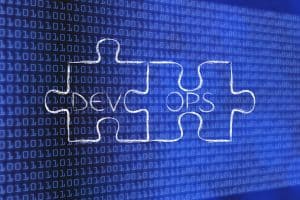
DevOps teams are starting to shift AIOps use to earlier in the pipeline to analyze development and pre-production environments and reduce risk.
Industry analyst Gartner recently published their latest market guide to AIOps platforms, noting a shift towards domain-agnostic functionality. Domain-agnostic can be interpreted as meaning that there isn’t a specific monitoring tool behind it and that it hasn’t emerged from a particular domain such as network or application performance. They are pure-bred AIOps solutions, if you like, as Moogsoft is. Gartner advises that domain-specific platforms are limited in their use cases and are not purpose-built to ingest data from multiple sources.
The analysts note that the enterprise market for these tools is growing, in part due to the explosive growth of big data. Knowing that 90% of the world’s data has been generated in the last two years and that over 80% of any business’ data is unstructured (volume and variety) helps us understand why it’s simply impossible for people to process this in a meaningful timeframe. Logs are a good example of unstructured data in the context of AIOps. As the analysts put it:
“There is no future of IT operations that does not include AIOps. This is due to the rapid growth in data volumes and pace of change (exemplified by the rate of application delivery and event-driven business models) that cannot wait on humans to derive insights.”
This points at velocity, the third of big data’s three Vs (the other two being volume and variety). Time is ever more of the essence. Big data wants real-time insights, and AIOps demands them. If the ultimate goal is the reduction of MTTR to its lowest possible, we need to be as quick with the actionable insights as machinely possible. We are now streaming analytics for continuous insights.
The pandemic has also had a positive effect on adoption. In many cases, it’s accelerated migration to cloud (and cloud-native organizations particularly love AIOps for IAAS) and heightened the desire to consolidate platforms and reduce outgoings. It’s also putting pressure on conversion on investment in these tools into value outcomes for the business. The report names three aspects of AIOps: observe, engage and act. It’s the outcome of the actions that really matters.
The report also touches on the importance of incorporating AIOps into the DevOps toolchain architecture when it emphasizes the imperative for bidirectional integration with service desk and support tooling. It goes deeper still when it describes how teams are starting to shift AIOps left, using it earlier in the pipeline to analyze development and pre-production environments and reduce risk.
I have long incorporated planning, service desk, and monitoring in my DevOps toolchain architectures; too often, teams focus only on the CICD elements without considering the end-to-end value cycle. AIOps provides essential feedback on the customer experience that must be applied to the next iteration of improvements for optimization. It’s not just a way to fix problems faster; it is the basis for data-driven conversations, decisions, and empirical experimentation.
As natural language parsing (NLP) is increasingly prevalent in big data as a whole, its application to a ChatOps use case has not gone unnoticed by analysts. The use of group messaging tools is well-established as standard in most organizations, pre-pandemic even, although reliance upon them has accelerated in line with the uptick in remote working.
Many teams still hope for and work towards an autonomic, self-healing world, but there are significant challenges in building and trusting these approaches. In the meantime, collaborating effectively, especially when geographically dispersed, and with our tools too, is essential to achieving those business outcomes of reduced MTTR, increased time available and spent on innovation to release more value-generating and differentiating features to customers and paying down technical debt to build up system antifragility. ChatOps makes for better collaboration. It’s also a great way to capture and share knowledge, making local discoveries and global improvements.
A DevOps tenet is ‘telemetry everywhere.’ But there’s no point having everything broadcasting if it’s not being observed. And no point observing it if actionable insights can’t be extracted and executed. Telemetry plus AIOps brings real-time meaning to our data and puts teams in the best position possible today to perform optimally. As the analysts say, there’s no future without it.






